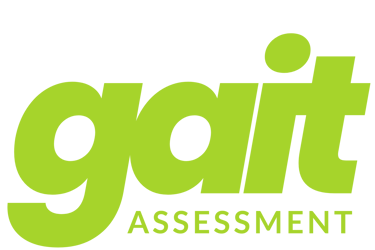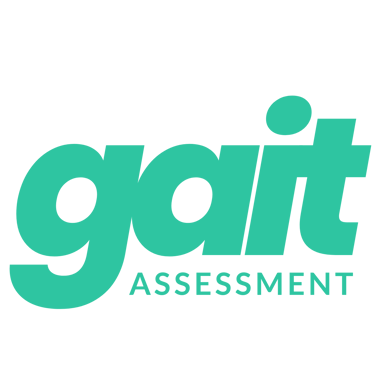The Quiet Crisis: Career Assessments in South Africa and Why It Matters
At Gait, we provide insightful assessments that align youth strengths and interests with real career paths, fostering self-awareness and meaningful choices.
Gerhard Olivier
10/24/20253 min read


At Gait Assessment, we believe that you can’t walk the right career path unless you first assess your footing. In South Africa, the data shows a large group of learners stepping into crucial decisions with limited guidance — and the cost is steep: for individuals, for institutions, for the country.
Below are the key facts, the gap and what to do about it.
1. What we
do
know about career-guidance / assessment-type touch-points
According to the Department of Higher Education & Training (DHET) 2024/25 Annual Performance Plan, the national career-help channel reached 94,134 users.
Multiple research and media sources show that first-year university drop-out rates in South Africa remain stubbornly high — many citing around 50–60% for first-year entrants.
What we don’t know: reliable national data on how many learners undertake formal interest/aptitude/subject-choice assessments before matric or post-school enrolment — and how those assessments link to outcomes.
Key takeaway: The guidance ecosystem is active, but its reach is modest when compared with the number of learners who need it.
2. Who needs it: Matric/School-leaver scale
Hundreds of thousands of learners finish secondary school each year and face major decisions: subjects to choose, institution to apply to, qualification to pursue.
This transition point is precisely when structured career-guidance and assessment makes a difference — aligning interests, capacities and labour-market realities.
Though we lack a perfect figure for every learner needing guidance, what’s clear is the scale: large numbers, high stakes.
3. The outcome risk: First-year university drop-out
One report says research “supports the pervasively stubborn first-year drop-out rate of 60%”.
Other analyses place first-year drop-out in contact degrees at ~20–33% in earlier years — showing the spread of estimates.
Why this matters: When learners choose mis-aligned paths (subject/institution/qualification), the risk of early exit increases — costing time, money and potential.
4. The Accessibility Gap: Let’s do the math
Putting it all together:
Lots of learners every year needing guidance.
A relatively modest number accessing structured assessment/guidance via national channels.
High first-year drop-out rates signalling mis-alignment.
Here’s the rough comparison:
If ~800 000–900 000 learners finish school and enter post-school decision phase each year (ball-park estimate).
If only tens of thousands access formal national guidance/assessments.
Then the majority enter without structured assessment support.
With first-year drop-out up to ~50–60%, there’s a major missed opportunity.
In short: Many learners are walking into their post-school decision blindfolded — and the system is paying for it.
5. Why this gap persists
At Gait Assessment we recognise several real-world barriers:
Resource & capacity constraints: Many schools (especially in rural/underserved areas) don’t have enough career-guidance counsellors or formal assessment tools.
Scale challenge: With huge numbers of matric candidates and limited formal assessment infrastructure, scaling is non-trivial.
Access & awareness: Learners/families may not be aware of formal career assessments, or may rely only on informal advice.
Cost & logistics: Formal psychometric or fit assessments often require licences, trained administrators, digital infrastructure.
Tracking & data: Without data linking “assessment → subject choice → drop-out/throughput”, it’s harder to demonstrate value and scale up investment.
Alignment & integration: Even when assessments are done, translating results into subject choice, institution choice and funding decisions remains complex.
6. What we propose: Bridging the gap
Here’s how to close the accessibility‐gap and improve outcomes:
Digital-first assessments: Make interest/aptitude/subject-choice assessments accessible online (mobile-friendly, low-data, multilingual) so schools & learners across geographies can participate.
Embed early: Introduce career assessments as part of the curriculum by Grade 10, so learners make more informed subject/institution choices in Grades 11–12.
Upskill educators and counsellors: Equip Life Orientation teachers, school career-guidance staff and external partners with training to administer, interpret and act on assessments.
Data & outcome tracking: Link assessment participation with outcomes (drop-out, throughput, alignment) so we can show the return on investment of guidance interventions.
Focus on under-served areas: Prioritise rolling out assessments and guidance support in rural, township and other disadvantaged schools.
Collaborations: Partner with government (DHET, DBE), NGOs, industry and tertiary institutions so that assessments lead to viable pathways — not just reports and no follow-up.
7. Final word
If South Africa is serious about turning matric passes into sustainable post-school success, then career assessments shouldn’t be a luxury — they must be foundational.
Every learner deserves a chance not just to pass matric, but to choose a path that aligns with their strengths, interests and the labour market. When first-year drop-out rates sit at roughly half, that’s a loud signal: we need to get better at the early decision-points.
At Gait Assessment, we’re ready to support scalable, quality assessments and guidance programmes that align learners with their best paths. Because when you find your footing early, the journey ahead is steadier.
References
Annual Performance Plan 2024/25, Department of Higher Education & Training: Link
“First-year dropout: South Africa’s untold university crisis.” Future SA. Link
“University drop-out crisis for South Africa.” BusinessTech. Link
“5 reasons why students drop out of university – FundiConnect.” Bizcommunity. Link
CONTACT US
FOLLOW US
gait assessment brought to you by go.ai Pty Ltd © 2025. All rights reserved.


NAVIGATE
ABOUT
PARTNERS
